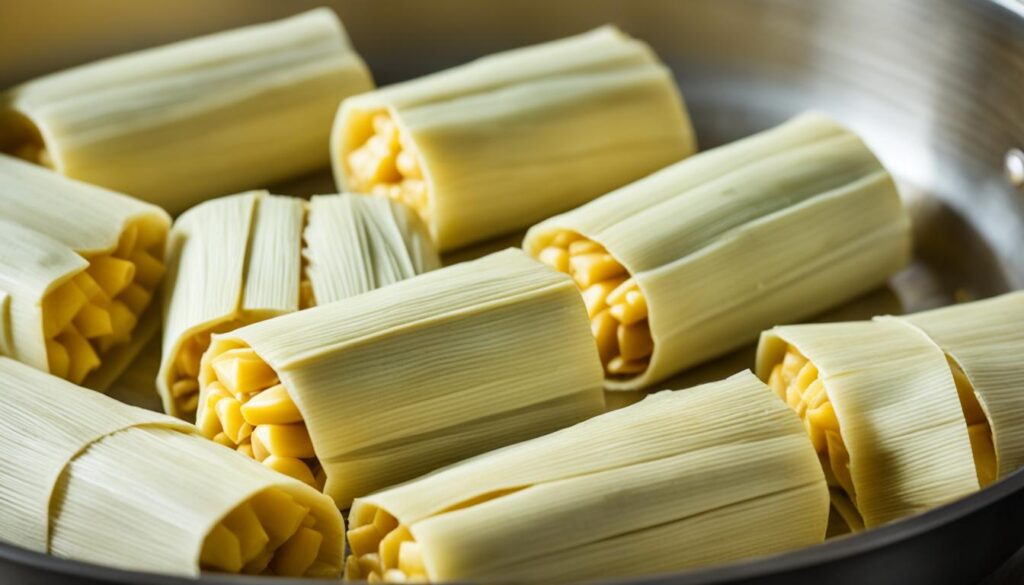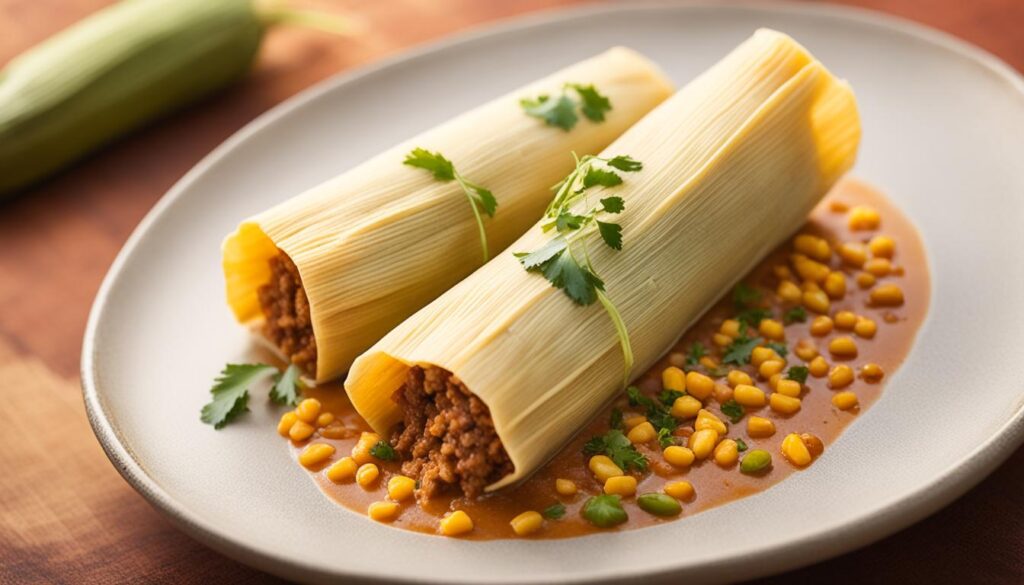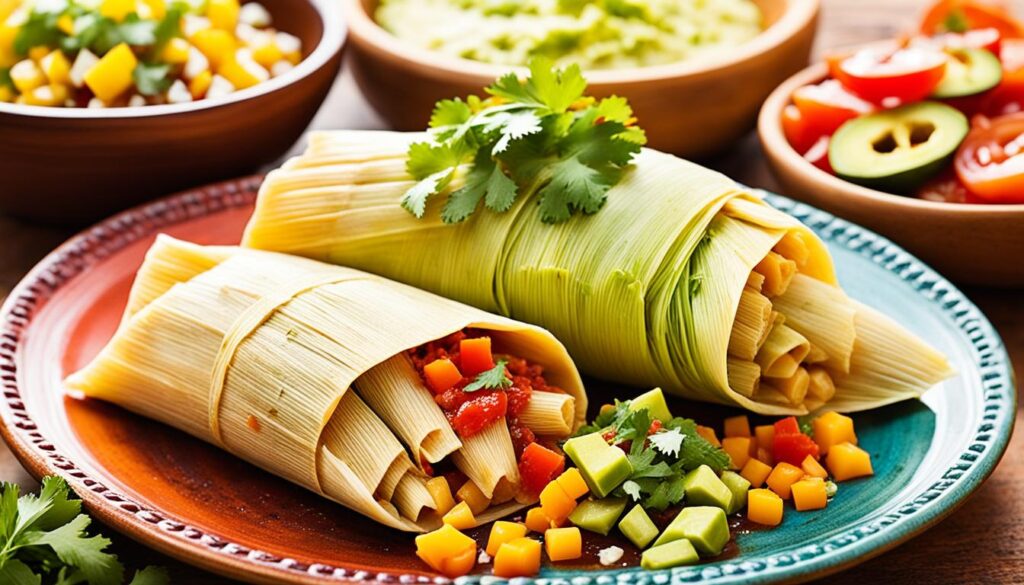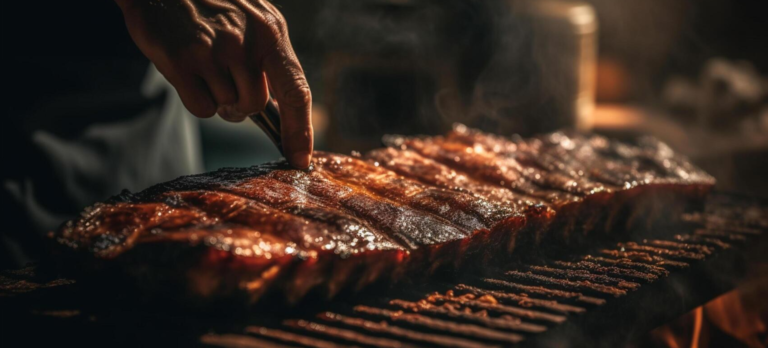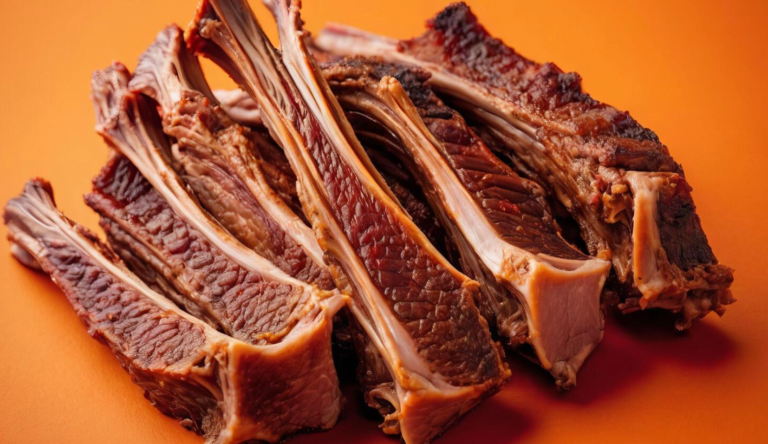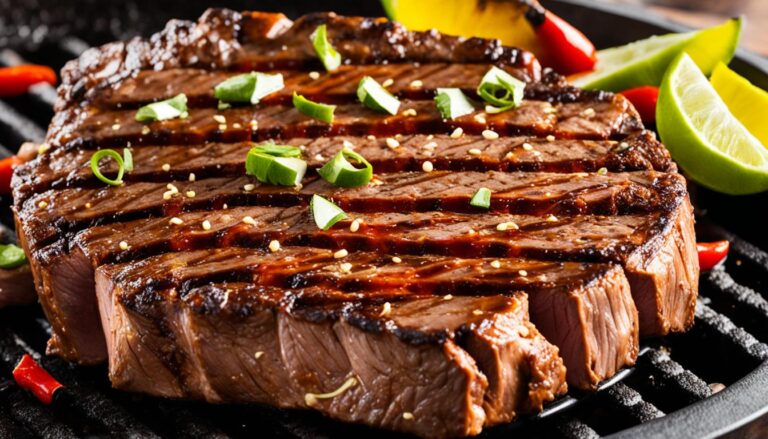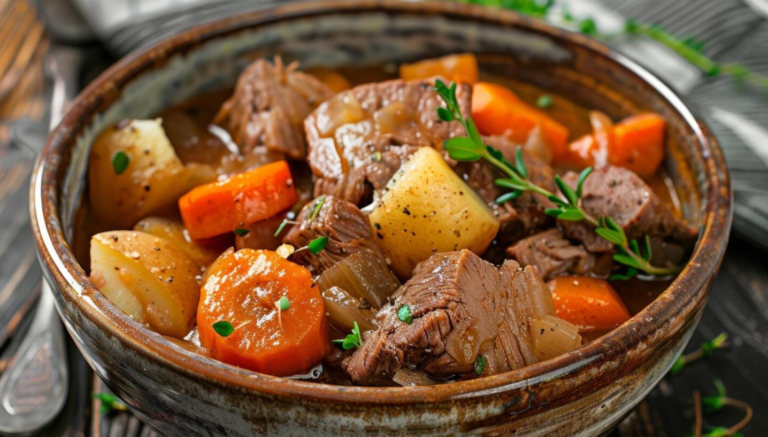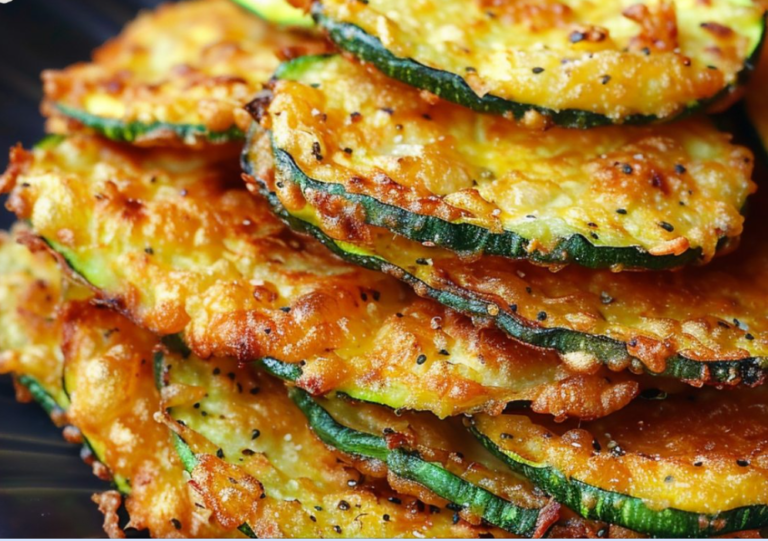If you’re eager to dive into the rich world of Mexican cuisine, mastering the art of steaming tamales is a skill worth adding to your culinary repertoire. Steaming is a crucial step in making perfect tamales, ensuring they are cooked thoroughly while retaining their authentic texture and flavor. Whether using a traditional tamales recipe or crafting homemade tamales from scratch, this guide will walk you through every step of the process.
Key Takeaways
- Steaming tamales is a vital technique in Mexican cuisine.
- Proper steaming achieves perfectly cooked tamales.
- Essential equipment is needed for successful tamale steaming.
- Preparation steps are crucial for homemade tamales.
- Arranging tamales correctly ensures even cooking.
Introduction to Steaming Tamales
Steaming tamales is a time-honored culinary technique essential for preserving their texture and flavor. This steam cooking method ensures that tamales remain moist and evenly cooked, offering a delightful bite every time.
Why Steaming is Important
The steam cooking method is crucial in tamale preparation as it helps retain moisture and evenly distributes heat throughout the tamale. This results in a tender and flavorful final product. Unlike boiling, which can make tamales soggy, steaming gently cooks them without direct contact with water.
“Steaming tamales are the key to achieving that perfect balance of moist masa and flavorful fillings.”
Essential Equipment Needed
To successfully steam tamales, having the right kitchen equipment for tamales is essential. Here are some options:
- Steamers: Traditional tamale steamers like those from IMUSA or Granite Ware.
- Pots with inserts: Large pots with fitted steam inserts are excellent alternatives.
- Colanders and steam baskets: For those without specialized tools, metal colanders and bamboo steam baskets can be utilized.
These kitchen equipment pieces facilitate the steam cooking method effectively, making tamale preparation more efficient and enjoyable.
How to Steam Tamales
Mastering the art of how to steam tamales starts with understanding the key preparation and assembly steps. From tamale dough preparation to steamer assembly, each process is essential for achieving perfectly steamed tamales. In this section, you will find detailed instructions to guide you through each step.
Preparation Steps
The first crucial step in tamale dough preparation is creating the masa, which involves mixing masa harina with water or broth, lard, and seasoning until it reaches a smooth consistency. Once the dough is ready, proceed to masa spreading – spread the dough evenly on softened corn husks to ensure uniform cooking. Make sure to leave room for the filling, whether it’s shredded meat, vegetables, or cheese. Lastly, fold the husks around the filling, making sure they are well-wrapped.
Setting Up Your Steamer
Next, focus on the steamer assembly. Whether you use a dedicated tamale steamer or an improvised setup using a large pot and a steamer basket, the principles remain the same. Fill the pot with water just below the bottom of the basket to avoid touching the tamales. Preheat the water to start the steaming process effectively.
Properly Arranging the Tamales
Finally, arrange the tamales in the steamer upright, with the open ends facing upwards. This positioning aids in even cooking and prevents water from seeping into the tamales. Do not overcrowd the steamer to allow sufficient steam circulation around each tamale. Adjust the lid securely to maintain steam and cook for the required time, typically around 1-1.5 hours until the dough is firm and cooked through.
Choosing the Right Ingredients
When it comes to making tamales, selecting the right tamale ingredients is essential for achieving the perfect taste and texture. Begin with masa harina, a specially treated corn flour that’s indispensable for creating a flavorful and cohesive dough. Opt for high-quality brands like Maseca or Bob’s Red Mill, which are renowned for their consistency and taste.
Incorporating fresh produce into your tamales elevates the overall flavor profile. Freshly sourced vegetables like corn, chili peppers, and tomatoes offer vibrant flavors that complement the masa. Farmers’ markets or organic grocery stores are great places to find the freshest options.
Quality meats play a pivotal role in the heartiness of your tamales. Whether you choose traditional fillings like pork, chicken, or beef, the key is to select cuts that are both tender and flavorful. Opt for grass-fed beef or free-range chicken to ensure a richer taste and better texture.
“The quality of your ingredients can make or break your tamales. Always go for the freshest produce and the best meats you can find,” advises famed Mexican chef Pati Jinich.
| Ingredient Type | Recommended Options |
|---|---|
| Masa Harina | Maseca, Bob’s Red Mill |
| Fresh Produce | Corn, Chili Peppers, Tomatoes |
| Quality Meats | Grass-fed Beef, Free-range Chicken |
A thoughtful combination of tamale ingredients like masa harina, fresh produce, and quality meats ensures tamales that not only taste authentic but also satisfy the palate.
Steaming Techniques and Tips
When it comes to achieving the perfect tamales texture, understanding the right steaming techniques and adhering to expert tips are essential. Let’s delve into some strategic methods to ensure your tamales cook evenly and are perfectly done.
Ensuring Even Cooking
A primary factor in obtaining that perfect tamales texture is ensuring even cooking. Here’s how to do it:
- Stacking Pattern: Arrange tamales upright, with the open end facing upwards. This method allows steam to circulate properly, providing uniform heat distribution.
- Layering: If you need to stack tamales in layers, use a perforated steaming basket to allow steam to pass freely between layers.
- Rotate: For larger batches, consider rotating the tamales halfway through the steam cooking time to ensure even exposure to steam.
Checking for Doneness
Knowing when your tamales are done is crucial. Use these tamale doneness indicators to guide you:
- Steam Cooking Time: On average, tamales require 1.5 to 2 hours of steaming, depending on their size and the type of filling.
- Internal Temperature: Tamales should reach an internal temperature of 165°F (74°C) to ensure they are fully cooked.
- Dough Firmness: Check the dough’s firmness. Your tamales are done when the dough has set and pulls away effortlessly from the corn husk.
By paying attention to these details, you can ensure that your tamales have the perfect texture and are thoroughly cooked each time.
| Indicators | Description | Ideal Measurement |
|---|---|---|
| Internal Temperature | Temperature tamales should reach | 165°F (74°C) |
| Steam Cooking Time | Recommended steaming duration | 1.5 to 2 hours |
| Dough Firmness | When the dough easily pulls away from the husk | – |
Troubleshooting Common Issues
Preparing tamales can sometimes be fraught with challenges. Whether you’re dealing with tamale preparation problems like masa sticking to the husks or the frustration of undercooked fillings, it’s essential to know how to navigate these hurdles. Below, we provide tips from culinary experts on resolving cooking mistakes and ensuring your tamales come out perfectly every time.
- Masa Sticking to Husks: One of the most common tamale issues is masa that adheres stubbornly to the corn husks. This often occurs when the masa is too wet. To fix this, add more masa harina to the mixture to achieve the right dough consistency. Ensure that the husks are thoroughly soaked and softened before use.
- Undercooked Fillings: Another frequent problem is undercooked tamale fillings. This can be due to insufficient steaming time or incorrect arrangement in the steamer. Always check that your steamer allows adequate steam circulation. You might need to steam the tamales for longer than the recipe suggests, especially if they are densely packed.
- Breaking Tamale Wrappers: If your tamale wrappers break during steaming, it might be that they’re too dry or not pliable enough. Soaking the corn husks longer in hot water before use can prevent this. Premature tamale splitting can also be remedied by using a double layer of husk or a parchment paper wrapper.
| Tamale Preparation Problems | Possible Causes | Solutions |
|---|---|---|
| Masa sticking to husks | Overly wet masa | Add more masa harina, properly soak husks |
| Undercooked fillings | Insufficient steaming, incorrect arrangement | Extend steaming time, ensure good steam circulation |
| Breaking wrappers | Dry or stiff husks | Soak husks longer, use double layer |
By understanding these typical tamale preparation problems and implementing these solutions, you’ll be better equipped to tackle any obstacles you encounter. With patience and practice, resolving cooking mistakes will soon become an effortless part of your tamale-making process.
Serving and Enjoying Your Tamales
The joy of tamales extends beyond their rich, flavorful filling. Enhancing your dining experience with thoughtful tamale presentation can elevate your meal to a whole new level.
Presentation Tips
When serving tamales, the presentation is crucial. Start by using a vibrant plate that complements the tamale’s natural hues. Garnish with fresh cilantro, a wedge of lime, and a sprinkle of cheese for a visually appealing touch. Drizzle homemade salsa or a tangy tomatillo sauce over your tamales. Not only does this add a burst of flavor, but it also provides an appealing contrast against the golden masa.
Side Dishes and Pairings
Complement your tamales with popular Mexican cuisine sides to create a well-rounded dining experience. Classic choices include refried beans, Spanish rice, and guacamole. For something more innovative, consider elote (Mexican street corn) or a zesty ceviche. These dishes bring vibrant flavors and textures to your meal.
Moreover, consider thoughtful food pairings to enhance your tamales. A chilled horchata or tart margarita can beautifully balance the richness of tamales. For those who prefer non-alcoholic options, a refreshing agua fresca works wonders.
By focusing on tamale presentation and pairing them with the right sides and beverages, you ensure every dining experience is memorable and satisfying.
Conclusion
The journey through tamale cooking mastery unveils a rich tapestry of tradition, flavor, and technique. We’ve walked you through the essentials of why steaming is crucial, the necessary equipment, and how to prepare and set up your steamer for the perfect batch of tamales. By choosing the right ingredients and following our detailed steaming techniques and tips, you can ensure even cooking and optimal doneness.
From troubleshooting common issues to presenting and enjoying your tamales with the best side dishes, every step has been meticulously crafted to help you embrace the authenticity of Mexican cuisine. Our comprehensive guide aims to empower you with the skills needed to transform simple ingredients into a culinary delight, offering final thoughts on steamed tamales that emphasize their cultural significance and unparalleled taste.
We hope that this recap on making tamales serves as an inspiration for you to dive into the beautiful tradition of tamale making. Whether you are a seasoned cook or a beginner, the joys of creating, steaming, and sharing tamales extend beyond the kitchen, fostering community and connection. So, gather your ingredients, set up your steamer, and relish the delightful flavors of perfectly steamed tamales.
FAQ
Why is steaming the preferred method for cooking tamales?
Steaming tamales is crucial for achieving the perfect texture and flavor. The steam cooking method ensures moisture retention and even heat distribution, resulting in tamales with a tender, yet firm masa and well-cooked fillings, which are key attributes of traditional Mexican cuisine.
What essential equipment do I need to steam tamales at home?
To steam tamales, you will need a steamer or a large pot equipped with a steam basket or colander that can hold the tamales upright. Additional materials may include a lid to cover the pot and aluminum foil to create a tight seal, ensuring proper steam circulation.
How do I prepare the masa dough for tamales?
Start by mixing masa harina with water or broth until you achieve a dough-like consistency. You can enhance the flavor by adding lard, salt, and baking powder. Spread the prepared masa thinly and evenly on pre-soaked corn husks before adding your chosen fillings.
How should I arrange the tamales in the steamer?
It’s important to stand tamales upright in the steamer, with the open end facing up. Avoid overcrowding to allow steam to circulate freely around each tamale. This ensures even cooking and prevents tamales from becoming mushy or undercooked.
What quality ingredients should I use for making tamales?
Choose high-quality masa harina for your dough, fresh produce, and premium cuts of meat for fillings. For vegetarian options, use fresh vegetables and flavorful spices. The quality of your ingredients directly impacts the taste and texture of your tamales.
How can I ensure my tamales are cooked evenly?
Arrange tamales properly in the steamer and periodically rotate them to ensure they cook uniformly. Maintaining a steady steam level throughout the cooking process and avoiding overheating or underheating is also crucial for even cooking.
How do I check if the tamales are done?
Tamales are done when the masa easily pulls away from the corn husks and has a firm texture. The internal temperature should reach around 165°F (74°C). If the masa is still sticky, allow them to steam for a bit longer.
What common issues might I encounter when making tamales, and how do I solve them?
Common issues include sticky masa, undercooked tamales, and fillings leaking out. Solutions include ensuring proper masa consistency, extending steam time if needed, and securely wrapping tamales in water-soaked corn husks to prevent leaks.
How can I present and serve tamales for a meal?
Serve tamales on a colorful platter, garnishing with fresh cilantro, slices of lime, and a variety of salsa. Pair them with traditional Mexican side dishes like rice, beans, and guacamole, and consider offering beverages like horchata or Mexican hot chocolate for an authentic dining experience.
